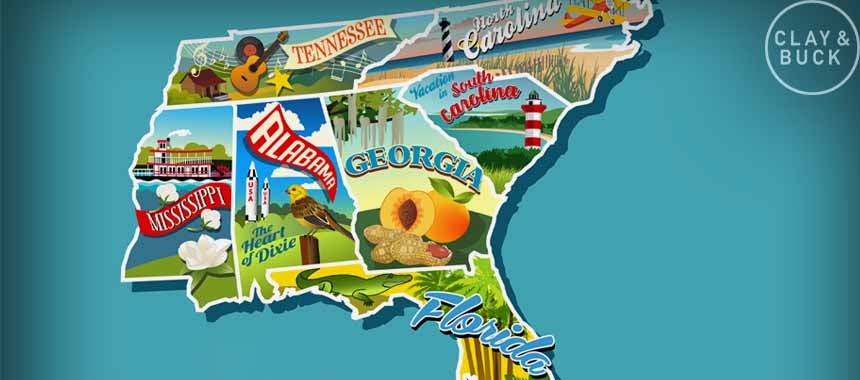Ryan Girdusky on GOP Long Shots the Red Tsunami Could Sweep In
13 Jul 2022
CLAY: We joined now right off the top of the hour by Ryan Girdusky. He is a political consultant, founder of the 1776 Project PAC, and he just had an article called The Longshots: Which Republicans Can Win That We Least Expect. We’ll get to that here in a moment. But, Ryan, I love setting over-unders in terms of what a reasonable expectation is as the midterms are now less than four months away.
So based on your substantial knowledge of the congressional and Senate races going on coming up in the midterms, what do you expect at this point in time an over-under in gains would look like this is House and also in the Senate, how would you assess the overall market?
GIRDUSKY: Thanks for having me on. I would say right now there’s about a 90% chance Republicans win the House, almost a certainty. The big question is do they win with 235 seats or 250 seats? I think there’s probably about a 20 to 25% chance Republicans end up with over 250 seats, be a close to historic high coming out of this election cycle, especially as they’re predicting will head into a recession come the end of the year right before the election. It does not look well for the party in power.
As far as the Senate goes, it’s really a jump shot. It really matters a lot on the can this. The big five states right now are New Hampshire, Pennsylvania, Georgia, Arizona, and Nevada, four are Democrat held states, one is a Republican held state. Pennsylvania which is Dr. Oz, and up in New Hampshire, Georgia, Nevada, and anniversaries you have Democrat incumbents facing Republican challengers.
BUCK: Ryan, it’s Buck, man, thanks for being with us. This piece you have up on your National Populist Newsletter on Substack is really interesting. The long shots, which Republicans can win that we least expect. So, we’re talking about kind of the moon shot, the long shot, the, oh, my gosh, they pulled it off — we’re not saying it will happen; we’re saying it could happen, or you’re saying it could happen. Walk us through some of these, because there’s some fascinating… I mean, California makes an appearance in here, New Hampshire makes an appearance in here.
The Long Shots – by Ryan James Girdusky- really interesting stuff here, worth a read https://t.co/OdL5cVCrMb
— Buck Sexton (@BuckSexton) July 13, 2022
GIRDUSKY: Right. So, I try to bring out these 10 candidates as symbols of larger political trends. So, the first one is Allan Fung. He is running for Rhode Island’s 2nd Congressional District which is the eastern portion of the state of Rhode Island. He’s run for governor twice and he’s done very well, but he’s lost both times. Now he’s running for Congress. New Hampshire — Rhode Island, rather — has not elected a Republican to Congress in decades.
So it will be, you know, it will be a major, major upset if he’s managed to pull this off. But more importantly, there are six congressional seats in New England. Now, right now Republicans have zero congressmen coming out of New England. They have one Senator, which is Susan Collins. They used to have a lot. They used to have two Senators out of Maine, two Senators out of New Hampshire and then a few House members out of a couple states. Right now, they are down to just one member.
Maine’s 2nd congressional New Hampshire is two congressionals, Rhode Island’s 2nd congressional and two congressional seats out of Connecticut are competitive this year with Maine’s 2nd congressional being the host competitive. If Allan Fung can win in Rhode Island, it is probably a larger symbol that we’re going to see victories in New Hampshire, in Maine, and possibly even in Connecticut, which also has not elected a single Republican in some time.
So, that will be a major upset if they manage to sit there and pull this off. Also, out of New Hampshire 2nd congressional, speaking of New England is George Hansel. George Hansel is a 35-year-old mayor of Keene, New Hampshire, which is not the beacon of conservatism by any stretch of the imagination. It borders Vermont, it’s very — it’s very New England. I think they’re very famous for their pumpkin festivals and keeping Keene strange.
And, but, anyway, this 36-year-old, George Hansel, he won his reelection with 82 percent margin. Now, he didn’t get 82%. He got I think 91% of the vote in his reelection bid. He’s very, very popular. Keene is not a small town. It’s like 30,000 people which, for New England, for New Hampshire, is a modestly big size place. So, he certainly has the potential. Going to California, you have Tom Patti. He is running in the 9th congressional, up in the northern part of the middle part of California, right?
A lot of working-class Hispanics in the Central Valley. There are right now three major competitive congressional seats in the Central Valley, the 22nd, the 9th, and the 13th. The 22nd is currently held by Republican Dave Valadao, the 13th and the 9th are Democrat-held seats. If we’re going to see a Hispanic wave, this constant stream of polling shows working class Hispanics moving towards Republican Party, where can we see it outside of central Florida — southern Florida, rather — and the Texas-Mexico border, where can we start to see it, is the Central Valley of California.
If Republicans can pick up the 9th, they will pick up the 13th, and they will likely keep the 22nd. Down in Southern California over in Orange County — remember owner County was the bastion Republicans gave us, Ronald Reagan and Richard Nixon. This area was super blue, massive demographic changes as whites have become a minority there and Hispanics and Asians have become the majority in that area.
 Katie Porter is one of the Democrat superstars in the House of Representatives. She’s a major fundraising magnet. She raises millions of dollars for the Democratic Party and she’s in a formally Republican seat as of 2018. Now, she won the first round, the jungle primary, by 51.7%. So, it’s not super likely she’s going to lose her seat. However, there is a chance. California has seen a lot of Republicans surging, especially in certain parts.
Katie Porter is one of the Democrat superstars in the House of Representatives. She’s a major fundraising magnet. She raises millions of dollars for the Democratic Party and she’s in a formally Republican seat as of 2018. Now, she won the first round, the jungle primary, by 51.7%. So, it’s not super likely she’s going to lose her seat. However, there is a chance. California has seen a lot of Republicans surging, especially in certain parts.
And Katie Porter is absolutely vulnerable to a guy named Scott Baugh. Scott Baugh, if he managed to pull off this victory, it will be a major upset ’cause Katie Porter is probably a future governor or senator in the state. I’ll just do one more House member, which is Alek — Alek Skarlatos is his last name. He is the subject of Clint Eastwood’s movie The 1517 to Paris that came out a couple years ago, he’s an American hero, stopped a terrorist attack in Paris.
He’s ran for office once before and now he is running against an open seat that is going out of a former retiring member of Congress. And his seat’s important because out of the northwestern United States, Oregon and Washington, there’s only four Republicans. But right now, there are four more Democrat-held seats that are competitive this year. Now, he’s not the most friendly seat. There is another one in Oregon which Republicans are likely to pick up and Washington’s 8th is more likely to pick up than his, but if he wins, it’s because Republicans are picking up three or four or five more seats out of the Pacific Northwest. And then I’ll just go to some more statewide races —
CLAY: Let me ask you… Let me pause you. You are an unbelievable knowledge base here, Ryan. Ryan is breaking down the entire map for us on the House and the Senate. Let me just ask a question here, Ryan. You said 90% chance of a House win. There are some suggestions Republicans might set a hundred-year high in terms of the number of seats they have. But you mentioned New Hampshire, Pennsylvania, Arizona, Georgia, and Nevada as the states that would be deciding the Senate in terms of it’s a 50-50 split right now.
I want to ask you about a couple of states here and see what you would assess in terms of the map. You’re writing about long shots. Ryan Girdusky with us. What do you think in Wisconsin? Our friend Ron Johnson is going to be in for a donnybrook of a battle in Wisconsin, and then we are hearing on the show — and, Buck, and I have conversations — that there’s some cautious optimism in both Washington State and Colorado. Those are blue states, clearly, but the candidates for Republicans are quite strong. How would you assess the map both in Wisconsin, maybe in Washington and in Colorado from a Senate perspective? And are there any other races that you kind of got your eye on where they would be big upsets but Republicans may have a heartbeat, a flicker, a strongly growing chance there as well?
 GIRDUSKY: Well, I would say… So Wisconsin, I don’t think, I think Ron Johnson will be fine. I don’t think that he’s in for… I think that he’ll be fine. I keep Wisconsin is a trending Republican state in a Republican year, and Ron Johnson is a great candidate.
GIRDUSKY: Well, I would say… So Wisconsin, I don’t think, I think Ron Johnson will be fine. I don’t think that he’s in for… I think that he’ll be fine. I keep Wisconsin is a trending Republican state in a Republican year, and Ron Johnson is a great candidate.
BUCK: He’s probably listening so he’s kicking his feet up on the desk right now feeling good.
CLAY: We’re gonna do everything we can to get him over the finish line again, but that’s good to hear. All right. So Wisconsin, you’re not even putting in your five states where —
GIRDUSKY: No, I wouldn’t ever… Ron Johnson be a very strong incumbent, his first time; he beat him again the second time. Ron Johnson is a strong candidate. He fits Wisconsin very, very well, and I think that he’s a strong — I think he’s a great — candidate. I think he’ll be fine. Joe O’Dea. You mentioned Colorado and Washington. Colorado is on my list here. Colorado has not gone red since 2004 on a presidential matter. Republicans have won statewide there in 2010 and 2014, two other Red Waves.
This is a Red Wave. Joe O’Dea, he is a multimillionaire. He just put a million dollars into his own campaign, and Democrats spent $4 million campaigning against him in the Republican primary because they were hoping that a more fringe candidate was gonna win and be an easier victory for him. But he ended up pulling out win, and now he is running… I think he raised $2 million this quarter, which is substantial.
The incumbent, which is Senator Bennet, everyone assumes that he’s so safe. He ran in 2016 the last time, and he got just over 50% against a guy named Darryl Glenn, who was a good candidate but Darryl Glenn had very little money, very little resources, and he came within four points of beating him. He did extremely well considering he was against an incumbent in a year that Hillary upon the state by over five points.
If those conditions are matching the way that it was in 2014, Joe O’Dea has a chance of sitting and pulling off an upset. I wouldn’t focus on the Washington Senate race as much as I would focus on the Oregon governor’s race. Now, Oregon has not elected a Republican governor since 1982, which is before I was born. And they’ve only won one statewide Republican since the year 2000.
But there is a third-party challenger, a former Democrat running as an independent who has the endorsement of both a lot of former statewide Republicans and Democrats. She is going to take a lot of votes away from both Republican and the Democratic candidate, but Christine Drazan who’s running for Oregon governor. If there’s any Republican who can win statewide in the Northwest this year, it’s Christina Drazan. Conscionable the first Republican governor since 1982, 40 years if she’s able to pull this off and having a third-party former Democrat run will definitely give her a chance.
 BUCK: For any of you who want really good political analysis, Ryan Girdusky’s National Populist Newsletter on Substack, place you should go. Ryan, one more for you, though. This shift today the GOP, the Hispanic component of the coming Red Wave, how are these indicators lining up? How real does it seem? I know this will the votes are cast nothing is down, but how’s it looking?
BUCK: For any of you who want really good political analysis, Ryan Girdusky’s National Populist Newsletter on Substack, place you should go. Ryan, one more for you, though. This shift today the GOP, the Hispanic component of the coming Red Wave, how are these indicators lining up? How real does it seem? I know this will the votes are cast nothing is down, but how’s it looking?
GIRDUSKY: I mean, we had a victory for Mayra Flores in Texas, which definitely shows there was some heat and some fuel for finance. We’ve seen a lot of small victories where we’ve seen mayorships flip in certain areas and certain pockets move to the right. I think that — I think that right now it’s a lot of hopeful optimism. There’s certainly a lot of anecdotal evidence. But we should also measure of what does success among Hispanics look like?
Success over Hispanics does not mean we’re gonna win 60%. I don’t think anyone thinks that. Usually, Republicans in between 33 and 35%. If Republicans can break 40 to 45, in the low 40 range, that is considered a monumental success for the GOP. And that’s really what you need to gauge it on. I think you’ll see this in waves and pockets. So, a lot of the Hispanics, though, they do not live in competitive states. They live in states like New York or New Jersey or Illinois, and they don’t live in a lot of competitive Senate races this time.
There’s only two major ones, Colorado and Nevada. So, I think you need to look at certain House races, as I said, Central Valley of California, the Fajita Strip of south Texas, and parts of southern Florida which already Republican. But those are the areas I think you need to sit there and consciously look at it and say this is how we’re gonna gauge it into a larger political discussion. Maybe even the New Mexico governor’s race, possibly.
BUCK: Ryan Girdusky, everybody, check out National Populist Newsletter on Substack. Subscribe to it. Ryan, thanks so much.
GIRDUSKY: Thank you.
Recent Stories

C&B Say Thank You for Listening and Watching!
Wherever and however you choose to consume the show, we are thankful!

Culture Wins: Southern Schools Are Booming for a Reason
Clay relates a personal story that illustrates the shift.

From Lunges to CFP Predictions, Clay Catches Up with Markwayne Mullin
The Oklahoma senator has some fun -- and talks some serious issues, too.

VIP Video: The Left's Grifting Liars Come for Your Guns
Australia's draconian gun laws failed, so the left wants more laws.






